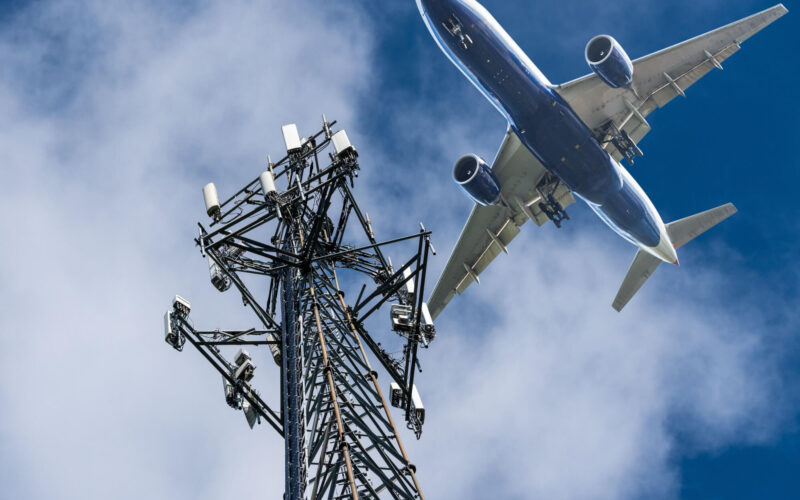Eurocontrol has set out suggestions for how aviation can better use radio spectrum to avoid saturation and interference, after rollouts of new 5G bands in the United States caused disruption to aviation.
The organization, which manages air traffic across Europe, said while the deployment of 5G in Europe was likely to have less impact than in the United States, there was no reason to be complacent.
In the US, the risk of signals from new 5G services interfering with aircraft radio altimeters, and thus affecting landings, thrust the issue of radio spectrum into the spotlight. After discussion with the Federal Aviation Administration (FAA), telecoms companies agreed to slow down deployment of new services and airlines are working to fit frequency filters to older equipment as quickly as possible.
“Spectrum disruption matters: signal interference from high-power users like 5G networks could threaten aviation safety, and entail significant financial costs for airlines,” Eurocontrol director general Eamonn Brennan commented in a statement on June 30, 2022 to accompany the publication of a Think Paper.
In the paper, Eurocontrol highlighted that spectrum was a “scarce resource that aviation and telecommunications are competing for”, with the safety needs of aviation having to be balanced against the business needs of the telecoms industry.
In Europe, the frequency bands next to those used by radio altimeters are used by lower power users, and the bands for 5G are also further away, meaning less risk of interference to radio altimeters, which help aircraft land safely in all weather conditions, including when weather and visibility is bad.
However, Eurocontrol highlighted that aviation must act now to improve how it uses the precious spectrum to avoid costly problems in the years ahead.
The network manager estimated that a year of diversions caused by 5G disruption to operations on days with low visibility could cost airlines and airports as much as €180 million ($188 million) and disrupt the travel plans of up to 1.2 million passengers.
It therefore identified three areas of focus to improve spectrum use:
Improving adjacent band filtering as much as possible;
Improving aviation equipment standards maintenance for legacy systems
Getting the balance right between coordinated deployments of new CNS (communication, navigation and surveillance) radio systems, including ‘settling for less’ if this aids global implementation.
“Clearly, aviation needs to devote more resources to tackling spectrum inefficiency – if we do nothing, there’s a real risk that aviation could be held back in coming years, as today’s systems will increasingly struggle to meet evolving operational requirements,” Brennan said.

